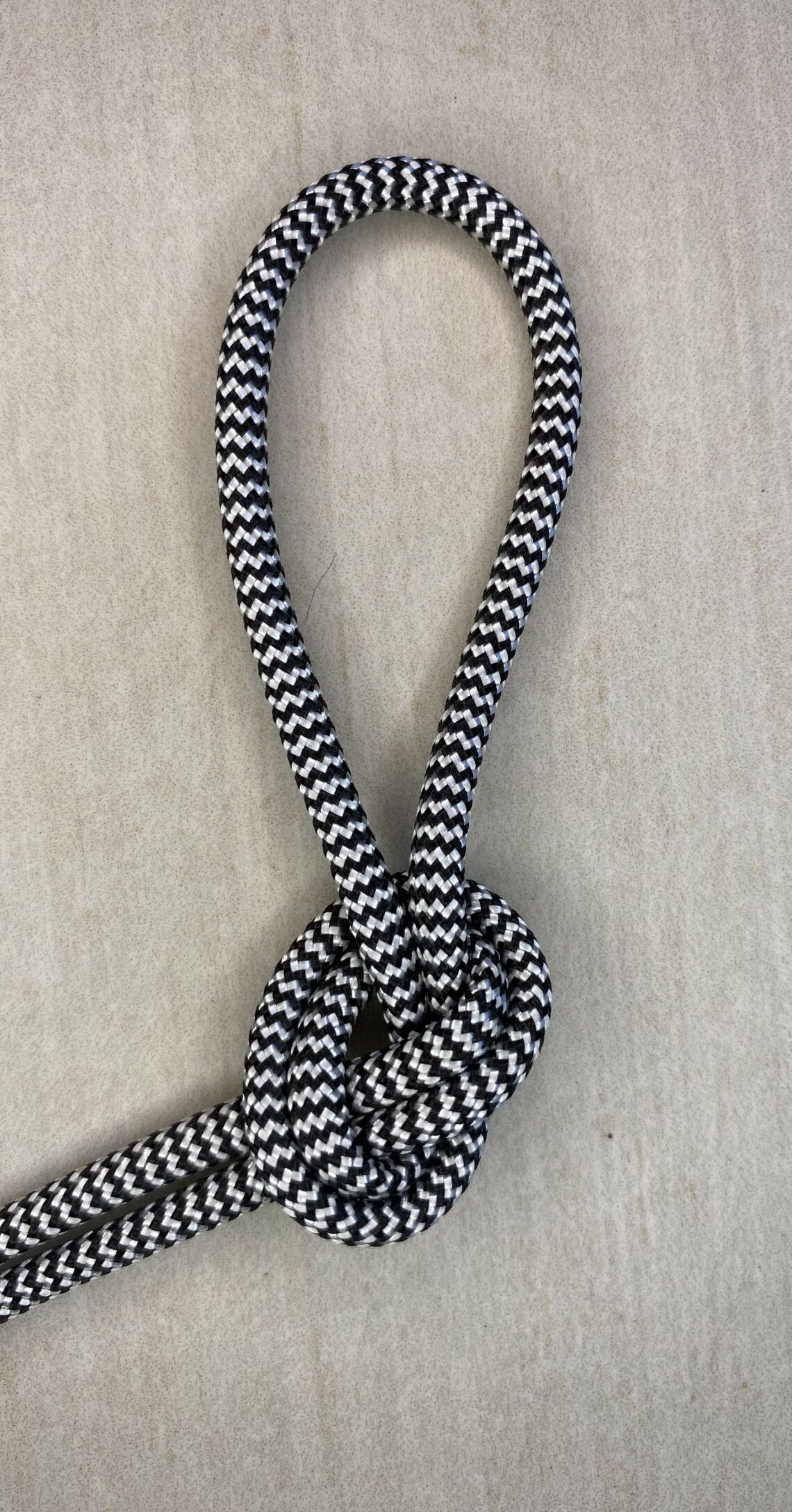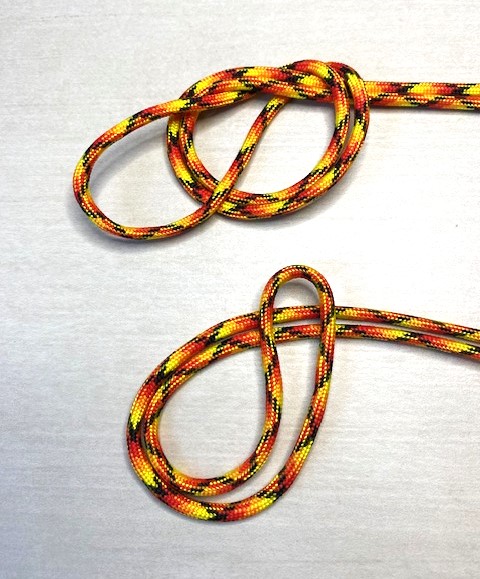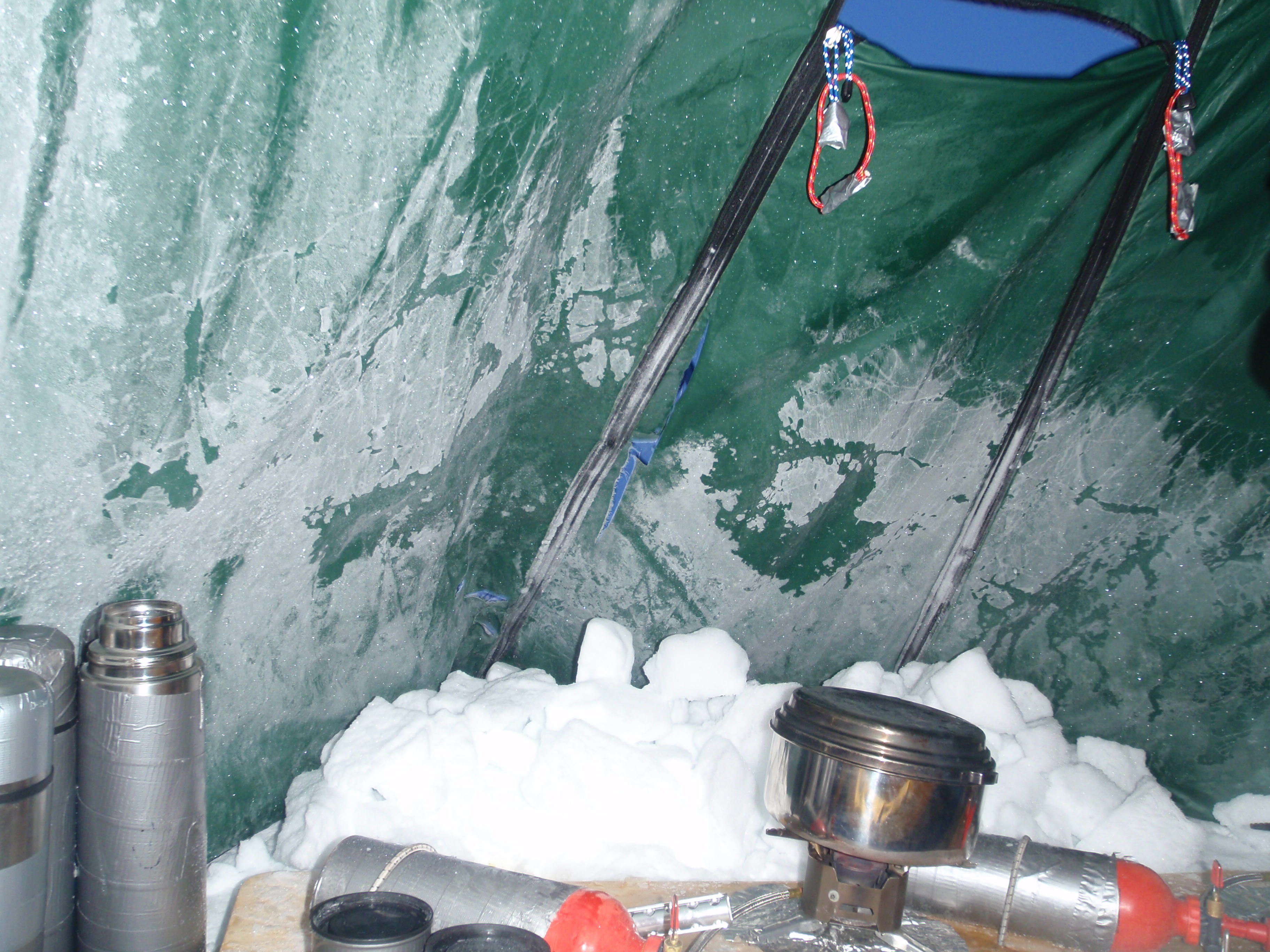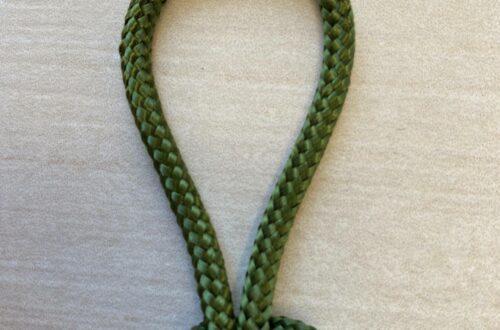
Overhand Loop Knot: A Simple and Secure Loop
The Overhand Loop is a versatile and straightforward knot used to create a secure fixed loop anywhere along a length of rope.
Here are some common uses and benefits:
Fishing: The overhand loop is frequently used in fishing to create a loop at the end of the fishing line. This loop allows for easy attachment of hooks, lures, or other terminal tackle.
Climbing and Mountaineering: In climbing, the overhand loop can be used to create a secure attachment point for carabiners or other climbing gear. It’s often used in conjunction with other knots in anchor building or to attach slings to harnesses.
Camping and Outdoor Activities: For setting up tarps, tents, or hammocks, the overhand loop is useful for creating adjustable guy lines or attaching lines to stakes or trees.
Boating and Sailing: In maritime activities, the overhand loop can be used to create a temporary attachment point for ropes or to create a loop in a line for various purposes like securing sails or attaching fenders.
DIY Projects: The overhand loop is handy for projects that require a secure loop, such as making lanyards.
Emergency Situations: Its simplicity makes it a valuable knot in emergency situations where quick, reliable attachment points are needed, such as in first aid scenarios or improvised rescue operations.
Benefits of the overhand loop include:
- Simplicity: It’s easy to tie and remember, making it accessible for beginners and useful in situations where speed is essential.
- Reliability: Despite its simplicity, the overhand loop is remarkably secure when properly tied and loaded in the right direction.
- Versatility: It can be used in a wide range of applications across various activities and industries, from recreational pursuits to professional settings.
- Minimal Material Consumption: The overhand loop requires minimal material to tie, making it efficient in terms of rope or line usage.
- Easy Adjustment: When used in setups like camping or outdoor activities, the overhand loop allows for easy adjustment of tension in the line.
**Often it is used as a stopper knot or as the first step in creating other more complex knots.
While the overhand loop is a versatile knot, it’s essential to understand its limitations and ensure it’s appropriate for the intended use, as it may not be suitable for very heavy loads or critical applications where more specialized knots are required.
Tying Guide

Hold the working end (the end you are actively working with) of the rope in one hand.
Pass the working end over the standing part (the rest of the rope).
Continue by wrapping the working end behind the standing part, forming a loop.
Insert the working end through the loop created in the previous step.
Pull both ends of the rope gently to tighten the knot. Ensure that the loop is properly formed, and the knot is snug.
If needed, you can adjust the size of the loop by pulling on the standing part and the working end accordingly.
The Overhand Knot can also be securely tied in the middle of a line, as long as the line is not under load at the time of tying. This versatility allows for its application as a reliable mid-line stopper knot or as a component within more intricate knot formations. Ensuring the line is slack when tying helps achieve a properly formed and secure Overhand Knot mid-line.
Remember that safety is crucial when working with knots. Always ensure that your knots are secure and appropriate for the intended use.





